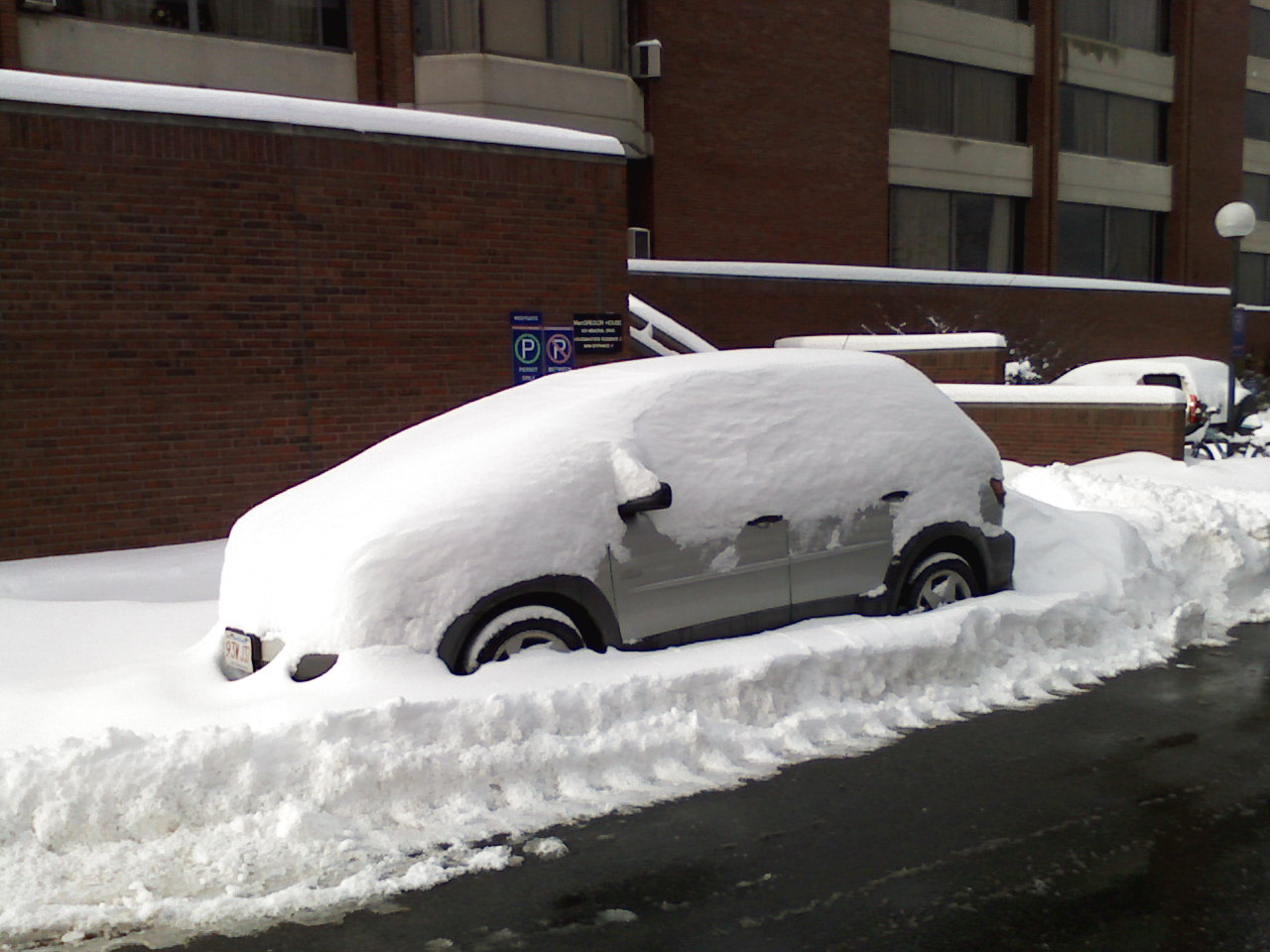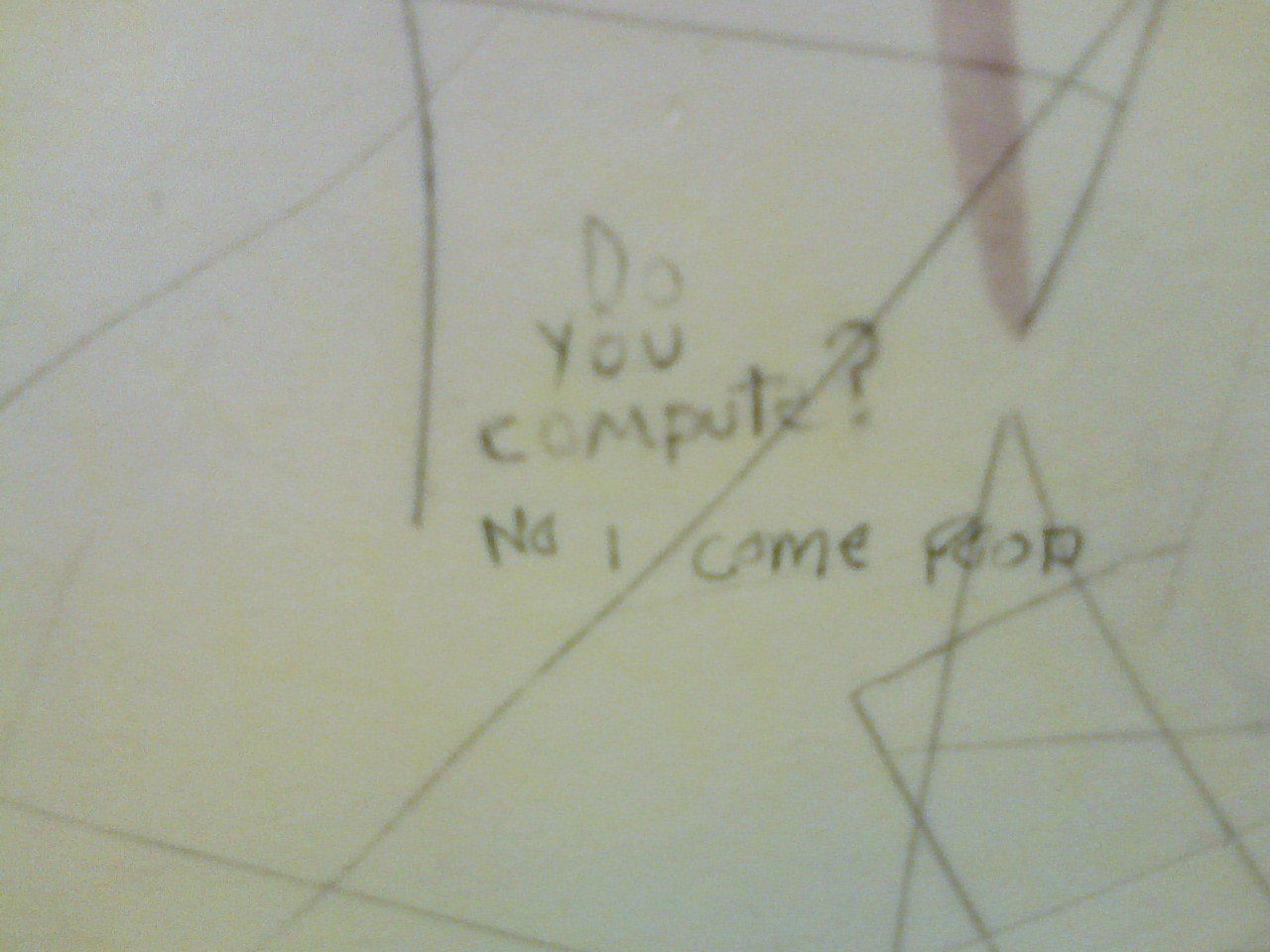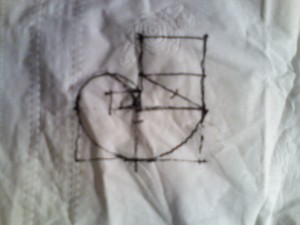June 16th, 2009 by Lawrence David
christina and i are escaping for one last summer adventure before the real world sinks its talons into us.
we’ve just gotten into bangkok where we’ll be based for the next two months. simply getting here was exciting, as a volcanic eruption in russia nearly forced our flight to turn around over the pacific.
more updates though after we unpack!
Posted in travel | 1 Comment »

April 23rd, 2009 by Lawrence David
I’ve recently started my last (hopefully) thesis project on my way to my PhD. The project will be a study of the human gut microbiome; to analyze it, I’ll be embarking on an investigation of several months worth of human feces. (And, if that high-level description grosses you out — be very afraid of the details that, in the name of basic human decency, I’m witholding from this blog.)
In any case, I’ve been discussing this project a lot lately in the lab as I’ve tried to work out the logistics of this project.
I had no idea though how much notoriety I had gained until yesterday, after dinner with some friends. As we were heading home, a labmate confessed, “Everytime I poop now, I think of you.”
Finally, my research is making a difference in someone’s life!
Posted in a day in the life, science! | No Comments »

April 1st, 2009 by Lawrence David
heard larry wall, creator and benevolent dictator for life of the perl programming language, speak today.
glad i went. the first 15 minutes or so was a bizarre stream-of-consciousness race through about 100 1-word slides. it was both profound and absurd, both celebration and diatribe. equally fun was seeing MIT in its finest geek culture glory: in a room of approximately 100 programmers, there were maybe 15 women, 30 ponytails, 1 female ponytail, and a clear correlation between beards and BMIs.
real jewels of the talk:
- hearing someone trained in linguistics describe their philosophy to computer language design. (noticed how he referred to variables as “nouns” and methods as “verbs.”)
- learning that hashes in perl are preceded with the “%” sigil, because the 2 dots in the percentage character are supposed to represent the key and value in a hash.
- hearing “we want perl 6 to be the martha stewart of languages — it’ll do everything everything better than any other language (except get incarcerated).”
Posted in a day in the life, geekery | 3 Comments »

March 24th, 2009 by Lawrence David
Now that spring has sprung itself upon us, I’m hoping it’s safe to start posting pictures of what winters in Boston are like:

Posted in a day in the life, photos | No Comments »

March 24th, 2009 by Lawrence David
I gave a 20-minute talk today to about 200 grad students, post docs, and faculty at a departmental retreat. I think the talk went pretty well — I don’t think I rushed at all and I stayed on time. Folks I met afterwards also appeared enthusiastic about my material / delivery.
The relative ease I felt while giving speaking stood in stark contrast to how anxious I was leading up to it. I’d never spoken in front of so many people before and was frankly a little intimidated. So much so that it spoiled my weekend a bit — I was having trouble giving my attention to non-talk-related tasks Saturday and Sunday.
I thought I’d make a note of this, since one of the reasons I agreed to give this presentation was my hope that I’d get some ease speaking in front of large audiences. Now that the talk is over, I recognize that it’s not comfort with speaking that I’d like more of (although that’s always nice), but rather comfort leading up to the talk. It’ll be interesting to see if that comfort increases in the coming years …
Posted in a day in the life | No Comments »

February 26th, 2009 by Lawrence David
wonderful transaction seen scribbled on a bathroom stall here at school:

Posted in a day in the life, photos | 9 Comments »

February 19th, 2009 by Lawrence David
i’m working on my thesis committee meeting slides under the loft bed in our bedroom. christina is asleep “upstairs,” exhausted from the drain of med school. fortunately for my blog, christina’s exhaustion and her penchant for sleep talking are on good terms.
christina: “yeah!”
me: “yeah what?”
christina: “the liver is filling inconsistently.”
me: “how should the liver fill?”
christina: “the food should go in all at once.”
christina: zzzzz.
it’s a little cute but also a little sad: even when she dreams, christina is in medical school.
Posted in a day in the life | 2 Comments »

January 30th, 2009 by Lawrence David
i don’t think i’ve blogged about this topic yet; with the aid of some wonderful experimental collaborators and my advisor, i co-authored a paper in science this past summer on microbial ecology. my contribution to the project was an algorithm i named AdaptML. it’s a pretty cool algorithm*: i think it’s one of the first to gracefully combine genetic sequence information with the metadata describing which environments those data were sampled from, in order to ultimately produce a model of what environments bacteria hosting those sequences are adapted to living in. the algorithm can even predict environmental associations for the ancestral bacteria which gave rise to the present day ones you’re studying.
using a really nifty piece of online software called iToL**, i was able to plot the output of AdaptML in a very pleasing way. for instance, below is a sample figure used to help produce the science manuscript. the tree structure represents our best guess as to how a particular genus of bacteria named Vibrio evolved over hundreds of millions of years. (if Vibrio sounds familiar to you, it’s because one strain causes cholera.) the colors on the outer rings relate what kind of environment present day samples were found in; the inner balls tell you were we predict ancestral bacteria would have wanted to live.

adaptml figure
in any case, the reason i bring all of this up (besides to feel good about myself for getting a paper published in a good journal), is because i learned today that the above figure made it onto the cover of a very well known textbook in genetics. it lives on amazon, and will now forever provide proof of my programming ineptitude if some bugs in my code eventually emerge.

* for those comp bio geeks who might be reading this, what’s nifty is what AdaptML does under the hood. the idea is that it treats the environmental metadata like sequence information and runs a general markov model to infer ancestral environmental metadata. for instance, if you had present day genetic sequences all related by a phylogenetic tree, you could apply a jukes-cantor or kimura model to calculate the most likely ancestral sequences on your tree, by assuming that each nucleotide in your sequence has a certain frequency and that the probabilities of nucleotides transitions satisfy certain properties. AdaptML uses that same idea, except that instead of considering 4 possible character states (nucleotides), it can handle N states, where N is the number of observed environments.
** i can’t rave about this software enough. i can honestly say it has changed the way i interpret my data; i never would have noticed patterns of evolution embedded in my datasets, had i not looked at them via iToL.
Posted in a day in the life, science! | 2 Comments »

January 27th, 2009 by Lawrence David
great moment #432:
you’re brainstorming in your advisor’s office and the conservation culminates in his declaration: “we’ll become the watson and crick of poop!”
i love grad school.
Posted in a day in the life | No Comments »

January 26th, 2009 by Lawrence David
i had dinner with a good friend from high school — JD — last friday night. we traded stories from high school, most notably reminiscing how he had actually dated lady gaga and brought her to prom.
JD is now studying architecture up the street at harvard.
it was insanely fun to talk to someone who devotes nearly all of his energy to being creative. i had such a good time that i wanted to write down here some of the fun things we talked about:
- architecture students are told by their professors on day 1 that, “you’ve already been in architecture school your entire life. every hospital, every school, every home you’ve been in — those structures have been slowly been informing your sense of space and design.”
- architects worry a lot about making “big mistakes.” if you screw something up bad in science, no one reads your paper and it’ll get forgotten. if you screw something up bad in architecture, evidence of your failure will stick around for decades …
- we talked a lot about photography and design. both force you to walk around and constantly study what’s in front of you: light, shadow, depth of field, angles, foreground, vanishing points, right angles. “so many people just use their eyes to not walk into things.
also, people like JD who can draw out on bar napkins how to get mollusk shells from the golden rectangle rock.

mollusk shell from golden rectangle
Posted in a day in the life | 6 Comments »






